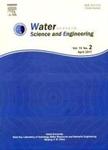Rainwater harvesting to alleviate water scarcity in dry conditions:A case study in Faria Catchment,Palestine
Rainwater harvesting to alleviate water scarcity in dry conditions:A case study in Faria Catchment,Palestine作者机构:Department of Civil Engineering College of EngineeringAn-Najah National University Institute of HydrologyUniversity of Freiburg
出 版 物:《Water Science and Engineering》 (水科学与水工程(英文版))
年 卷 期:2010年第3卷第2期
页 面:132-143页
核心收录:
学科分类:082802[工学-农业水土工程] 0707[理学-海洋科学] 08[工学] 0828[工学-农业工程] 0815[工学-水利工程] 0813[工学-建筑学] 0824[工学-船舶与海洋工程] 0814[工学-土木工程]
基 金:supported by the GLOWA-JR Project of the German Federal Ministry of Education and Research (BMBF)
主 题:rainwater harvesting surface water management options water resources Faria Catchment arid and semi-arid catchments TRAIN-ZIN model
摘 要:In arid and semi-arid regions, the availability of adequate water of appropriate quality has become a limiting factor for development. This paper aims to evaluate the potential for rainwater harvesting in the arid to semi-arid Faria Catchment, in the West Bank, Palestine. Under current conditions, the supply-demand gap is increasing due to the increasing water demands of a growing population with hydrologically limited and uncertain supplies. By 2015, the gap is estimated to reach 4.5 x 106 m3. This study used the process-oriented and physically-based TRAIN-ZIN model to evaluate two different rainwater harvesting techniques during two rainfall events. The analysis shows that there is a theoretical potential for harvesting an additional 4 x 106 m3 of surface water over the entire catchment. Thus, it is essential to manage the potential available surface water supplies in the catchment to save water for dry periods when the supply-demand gap is comparatively high. Then a valuable contribution to bridging the supply-demand gap can be made.



